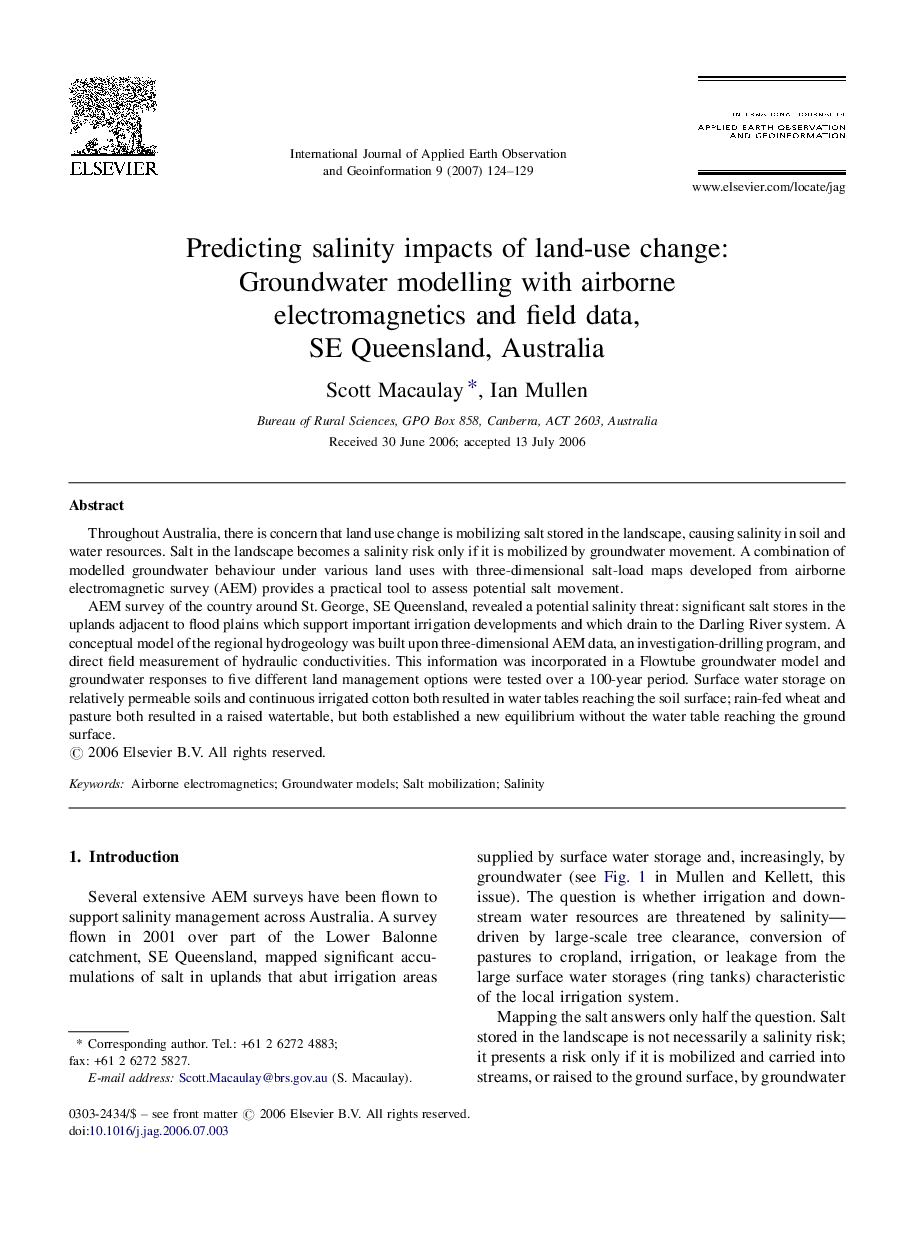| Article ID | Journal | Published Year | Pages | File Type |
|---|---|---|---|---|
| 4465465 | International Journal of Applied Earth Observation and Geoinformation | 2007 | 6 Pages |
Throughout Australia, there is concern that land use change is mobilizing salt stored in the landscape, causing salinity in soil and water resources. Salt in the landscape becomes a salinity risk only if it is mobilized by groundwater movement. A combination of modelled groundwater behaviour under various land uses with three-dimensional salt-load maps developed from airborne electromagnetic survey (AEM) provides a practical tool to assess potential salt movement.AEM survey of the country around St. George, SE Queensland, revealed a potential salinity threat: significant salt stores in the uplands adjacent to flood plains which support important irrigation developments and which drain to the Darling River system. A conceptual model of the regional hydrogeology was built upon three-dimensional AEM data, an investigation-drilling program, and direct field measurement of hydraulic conductivities. This information was incorporated in a Flowtube groundwater model and groundwater responses to five different land management options were tested over a 100-year period. Surface water storage on relatively permeable soils and continuous irrigated cotton both resulted in water tables reaching the soil surface; rain-fed wheat and pasture both resulted in a raised watertable, but both established a new equilibrium without the water table reaching the ground surface.
